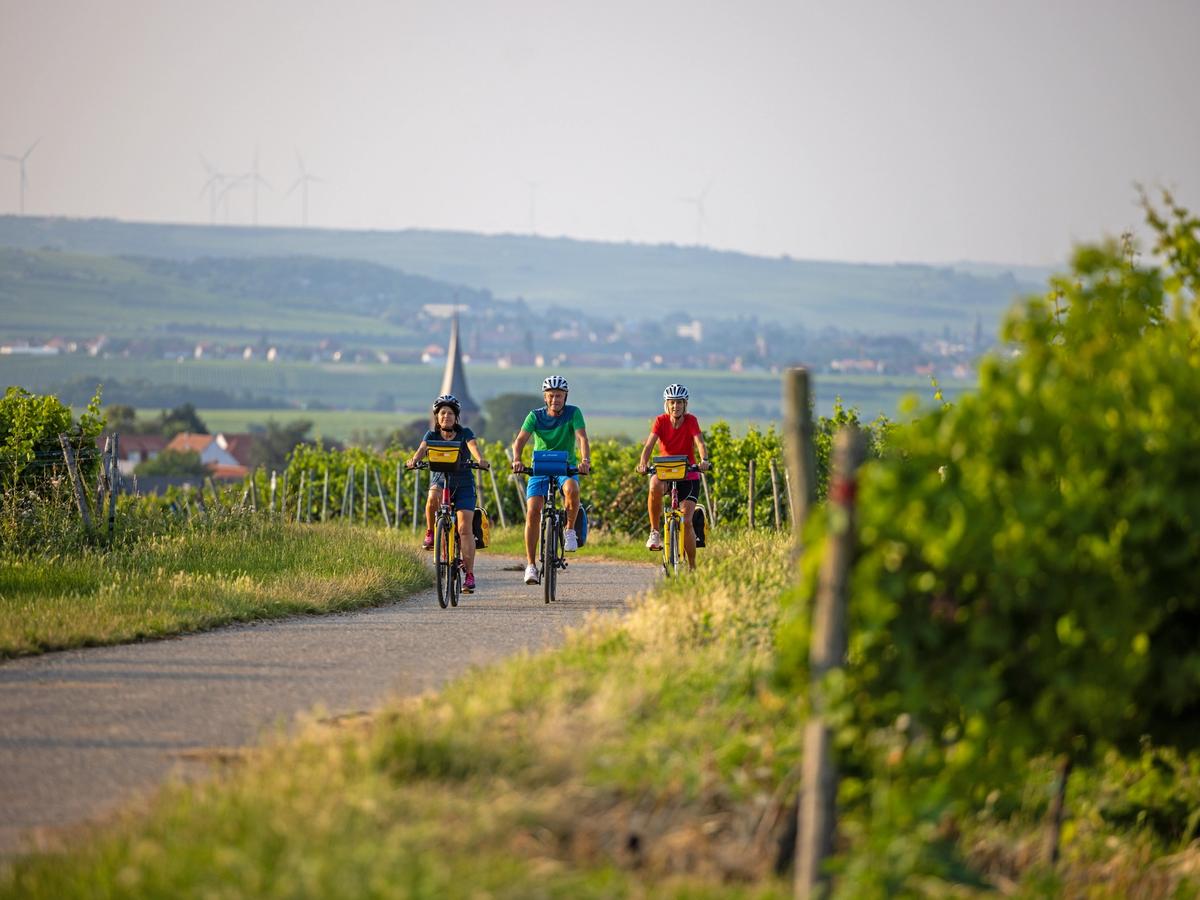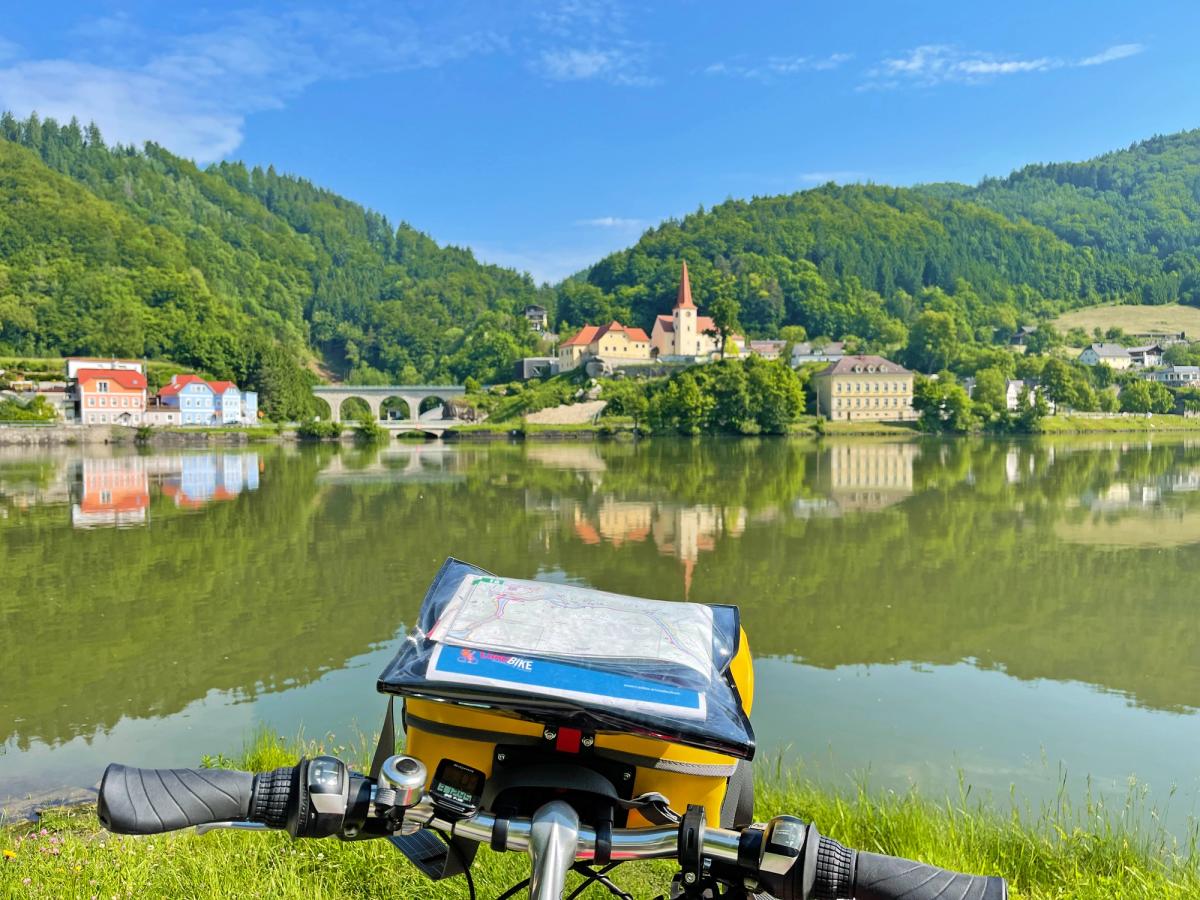
Easy

There’s something inherently poetic about cycling beside a great river. The rhythm of your pedalling falls in sync with the flow of the water, the landscapes evolve gently around every bend, and history unfolds in a seamless narrative that feels both ancient and alive. Among the world’s great cycling adventures, riding along the Danube River stands apart—not only for its beauty, but for the way it connects countries, cultures, and stories across the heart of Europe. One of the most accessible and rewarding segments of this legendary path is the Danube Short Break from Grein to Vienna, a four-day adventure that distills the spirit of the Danube into a perfect getaway.
The Danube River begins in the Black Forest of Germany and winds its way over 2,800 kilometres through ten countries before emptying into the Black Sea. As it travels, it knits together a vibrant patchwork of Central and Eastern Europe—Germany, Austria, Slovakia, Hungary, Croatia, Serbia, Romania, Bulgaria, Moldova, and Ukraine. Each country adds its own unique flavor to the Danube’s narrative, from Gothic castles and Roman ruins to baroque monasteries and wine-covered hills. But Austria’s stretch of the Danube, particularly between Grein and Vienna, offers something truly exceptional: a scenic, flat, and safe cycling route that delivers world-class landscapes, charming river towns, culinary treasures, and imperial grandeur—all in a short and flexible itinerary.
Your journey begins in the baroque town of Grein, nestled on the northern bank of the Danube. Grein is a storybook place with cobbled streets, pastel-colored houses, and Austria’s oldest theatre. It’s the kind of town that feels untouched by time, where the air is filled with the sounds of river life and the clinking of wine glasses on café terraces. From the moment you saddle up and push off, you’re drawn into the Danube’s embrace. The river guides you—always nearby, always serene—through landscapes that change like a film reel: sun-drenched vineyards, steep forested cliffs, open meadows buzzing with wildflowers, and quiet riverside villages where church spires pierce the sky.
Cycling this region means entering the Wachau Valley, a UNESCO World Heritage Site renowned for its natural beauty and cultural significance. It’s here that the Danube begins to weave its most enchanting spell. You pass beneath hilltop castles, through fragrant apricot orchards, and past monasteries that have stood for centuries. One of the most iconic sights along this route is Melk Abbey, an architectural marvel perched on a rocky outcrop overlooking the river. Its golden spires and opulent halls offer a glimpse into Austria’s baroque splendor, and a tour of the abbey feels like walking through a jewel box of art, music, and sacred tradition.
Further downstream, you’ll discover towns like Spitz, Weissenkirchen, and Dürnstein—places where time seems to slow. Dürnstein, in particular, is famous not only for its medieval charm but also for its ruined castle where King Richard the Lionheart was once imprisoned. These towns invite you to linger: sip wine on a terrace shaded by grapevines, browse the shelves of a local bakery for sweet Wachauer Laberl rolls, or simply sit by the river and watch the world drift by.
While the Danube Cycle Path is gentle and forgiving—ideal for beginner cyclists or anyone seeking a low-stress adventure—it’s the deeper experience that resonates most. You’re not just moving through space; you’re traveling through layers of history. Roman camps once stood on these riverbanks. Celts, monks, emperors, and traders all left their marks along this watery highway. The path you ride today echoes with stories of migration, war, love, and resilience.
As you move closer to Vienna, the atmosphere begins to change. The wildness of the countryside gives way to the elegance of Austria’s capital. The final stretch into Vienna is surprisingly green, passing through parks and along quiet urban trails that make the transition feel seamless. And then suddenly, there it is—Vienna, the imperial city of music, art, and refinement. It’s a fitting finale to a journey that began in rustic charm and crescendos in cultural grandeur.
Vienna itself is worth an extension if your time allows. Spend a day or two exploring Schönbrunn Palace, sipping espresso in a 19th-century coffeehouse, or enjoying a performance at the Vienna State Opera. It’s a city that rewards curiosity, where every corner offers something beautiful, whether it’s a Klimt painting, a plate of schnitzel, or the sound of a street violinist echoing through an alley.
Of course, while this short Grein-to-Vienna segment is ideal for a long weekend, the Danube Cycle Path doesn’t have to end here. For those bitten by the adventure bug, you can extend your ride into Slovakia, where Bratislava offers a quirky, youthful contrast to Vienna’s opulence. From there, it’s a natural continuation into Hungary, where Budapest awaits with thermal baths, ruin bars, and a dramatic skyline split by the Danube’s flow.
Each country along the Danube offers its own treasures. In Germany, you can start in the medieval city of Passau, where three rivers meet and the baroque architecture is rivaled only by the beer halls. In Slovakia and Hungary, the Danube becomes more exotic, its banks lined with Ottoman relics and post-communist charm. Farther still in Romania and Bulgaria, the river becomes wilder, edged by the rugged Carpathian Mountains and Danube Delta wetlands teeming with birdlife.
But whether you ride for four days or four weeks, there’s something transformational about cycling the Danube. It’s not a race or a challenge; it’s an invitation—to slow down, to connect, and to see the world from a new perspective. You’re not enclosed in a bus or train. You’re in the elements: feeling the breeze, hearing the birds, tasting the apricots, and waving to fellow cyclists who share the path. It’s freedom, pure and simple, wrapped in a ribbon of river blue.
So if you’re looking for an unforgettable travel experience that blends culture, nature, relaxation, and just enough adventure, look no further than the Danube. Start with the Grein to Vienna Short Break and let it be your gateway to a greater journey. Because once you’ve pedalled beside Europe’s most legendary river, you’ll understand: the Danube doesn’t just carry water—it carries wonder.

Easy

Leisurely

Moderate

Leisurely

Easy

Moderate

Moderate

Easy